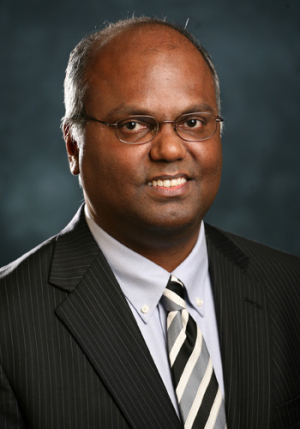New applied research hub to push commercialization of superconductor technology
The University of Houston has received a five-year, $3.6 million grant from the state’s Emerging Technology Fund to aid in the development and commercialization of products based on high-temperature superconductors.
The next step in more environmentally friendly energy, superconductors cut down on losses in power during energy transmission to deliver up to 10 times more power than traditional sources.
Using the state funding UH’s Texas Center for Superconductivity (TcSUH) and the university’s department of mechanical engineering will partner to establish the Texas Center for Superconductivity Applied Research Hub. The hub will work to bring industrial leaders in the field to Texas to accelerate development of this emerging technology.
“This award provides significant momentum for the UH energy initiative and our Tier One efforts,” said Joseph W. Tedesco, Elizabeth D. Rockwell Chair and dean of the UH Cullen College of Engineering. “Beyond the benefits to TcSUH’s Applied Research Hub, the ETF will allow engineering students the opportunity to interact with companies leading efforts in superconductivity at the university’s new energy park.”
Established by Gov. Rick Perry and the Texas Legislature in 2005, the fund was created to foster economic development in the state’s technology sector. The portion awarded to UH will be used to further research that could lead to commercialization of technologies based on superconductivity.
“High temperature superconductivity has the potential to revolutionize the way we use electricity,” said Venkat “Selva” Selvamanickam, M.D. Anderson Chair Professor of Mechanical Engineering and director of the Applied Research Hub. “The new research hub will leverage existing assets and create key collaborations that move Texas forward as a leader for applications of superconductor materials in medicine as well as improve the efficiency, security and stability of the electric power grid.”
Superconductivity uses certain ceramic materials that are cooled with liquid nitrogen so they have no electrical resistance. Without this resistance, electrons can travel through these materials freely allowing wires to be fabricated into power cables that carry large amounts of electric current for long periods without losing energy as heat.
While additional energy can be carried more compactly, superconducting cables and wires remain considerably more expensive to produce than traditional copper cables. The research hub hopes to find ways to combat this, and other problems to make commercialization of superconductor products simpler and more cost efficient.
“We will work with companies on the issues facing the industry right now,” Selva said. “And then we will solve those issues through our research here, license those technologies to the companies so they can go ahead and commercialize it and create jobs.”
Selva is just the person to help in this. He has made a career out of superconductivity, starting with graduate work at the University of Houston that led to the creation of a new method for fabricating high-performance superconductors in 1988.
Most recently, he served as the vice president and chief technical officer for SuperPower Inc., a world leader in the development of high-temperature superconductors, where he created and led a team to develop and scale up their products to commercialization.
Since joining the UH engineering faculty last year, Selva has continued to work closely with the company. They are pegged as the first partner in the new research hub and have plans to establish a facility in Houston. Together, SuperPower and hub researchers will work to further superconductor products based in the energy market, including transformers, wind generators, cables and magnetic energy storage.
Much like SuperPower, several companies will be targeted to bring their operations to Texas to collaborate with UH researchers in the hub during the five-year duration of the grant. These include Physics Professor Paul Chu, a winner of the National Medal of Science and National Academy of Science member who made significant advances in superconductivity; Kamel Salama, a professor mechanical engineering; Allan Jacobson, Robert A. Welch Professor of Chemistry; T. Randall Lee, Cullen Distinguished Professor of Chemistry; and Herbert Freyhardt, a research professor in the department of mechanical engineering. This is in addition to adding four other researchers.
These researchers work could have applications in everything from high-temperature superconducting sensors and nanomedicine to high-temperature superconducting cables and wires.
The grant is also expected to help secure the purchase of several pieces of state-of-the-art equipment, which will allow these researchers to setup core facilities in both TcSUH and new space at the University of Houston Energy Research Park.
